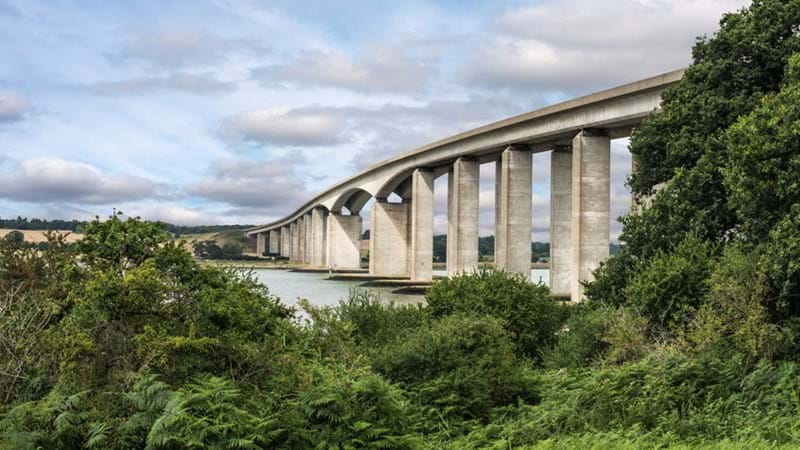The Orwell Bridge
The Orwell Bridge was opened to road traffic in 1982 and carries the A14 (then A45) over the River Orwell just south of Ipswich in Suffolk, England.

The main span is 190 metres which, at the time of its construction, was the longest pre-stressed concrete span in use. The total length is 1,287 metres from Wherstead to the site of the former Ipswich Airport. The width is 24 metres with an air draft of 43 metres. Pilings were sunk 40 metres into the river bottom. The main contractor was Stevin Construction B.V. – a Dutch company.
Construction of the bridge commenced in October 1979 and was completed in December 1982. The main span was constructed by using a balanced cantilever technique, casting sections on alternating sides of the pier in a weekly cycle.
Why the bridge closes
The bridge is only closed when it’s essential for safety reasons, and for as little time as possible. It was previously closed to all traffic if there were gusts of wind of 50mph or more in certain directions, or gusts of 60mph or higher, regardless of wind direction.
From 25 January 2021, we made changes to the bridge to allow it to remain open more frequently during high winds, following extensive safety testing.
Now a new 40mph driving speed limit has been imposed and is used if there are wind speeds forecast of over 45mph. If wind speeds of 60mph or more are predicted, then the bridge is closed due to the safety risk to motorists. The 60mph driver speed limit remains in place on the bridge during low winds.
You can read more about our changes on our Orwell Bridge speed limits project page.
View the latest Orwell Bridge closure protocol document.
View the previous Orwell Bridge closure protocol document.
View the latest bridge closure and wind speed reduction data.
View the local weather forecast.
Technical reports
A report was specifically commissioned from independent experts at City, University of London using ground-breaking techniques, to better assess how wind speeds affect different types of vehicles on the bridge. It has identified new things that could help to keep the bridge open during high winds.
The findings are theoretical, and have now been tested using a wind tunnel. Read:
